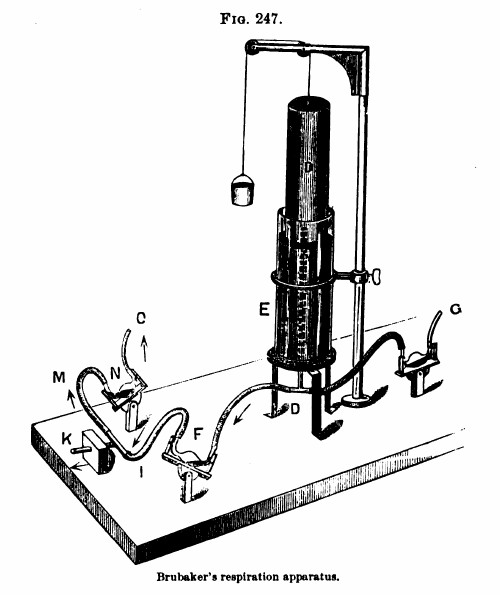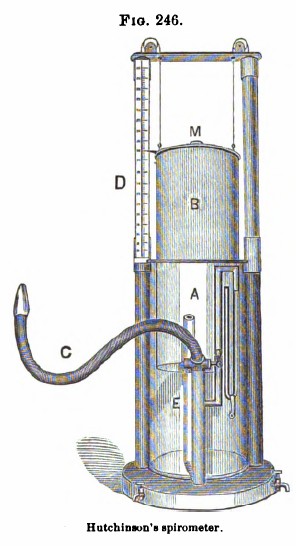From Treatise on human physiology by Henry Cadwalader Chapman, Published by Lea Brothers & Co, 1887, page 433.
“In determining the amount of air inspired or expired by an animal in a given time, we make use of a convenient apparatus constructed for this purpose by Dr. A.P. Brubaker, and which, in principle, is essentially the same as that commonly known as Rosenthal’s apparatus. It consists of a small spirometer (Fig. 247), the internal cylinder or gasometer (D) having a capacity of 700 c. cm. (43 in.) and equipoised by a bag of shot. Through the under part of the outer cylinder (E), which is firmly cemented to the stand, passes a T-shaped tube (D) connected with the tubes and valves which transmit the air to and from the gasometer. To one end of the tube (K) passing from the mask closely fitting to the face of the animal is adapted a tube (I) for transmitting the air to be inspired, and to the other end the tube and valve (M N O) for carrying off the expired air. The valves (F N) just referred to, are the same as those used by Voit in his respiratory apparatus shortly to be described, and consist of oval glass bulbs containing mercury. It is evident that as long as these valves are in the position shown in Fig. 247 the air will only pass in the direction indicated by the arrows. By reversing the valves (F N) the expired air will return back to the spirometer, and so can be measured. In using the apparatus the gasometer must be first raised by the hand through the whole extent or to a given height, to volume of air entering being determined by the scale. As soon as the gasometer has descended by exhaustion of the air through the inspiration of the animal it must be raised again – this, if the observation is to last any length of time. By connecting the tube G with a suitable reservoir the animal can be made to breath any gas that is desired, and the amount inspired in a given time approximately determined, the fluid used in the spirometer will then depend upon the kind of gas.”

